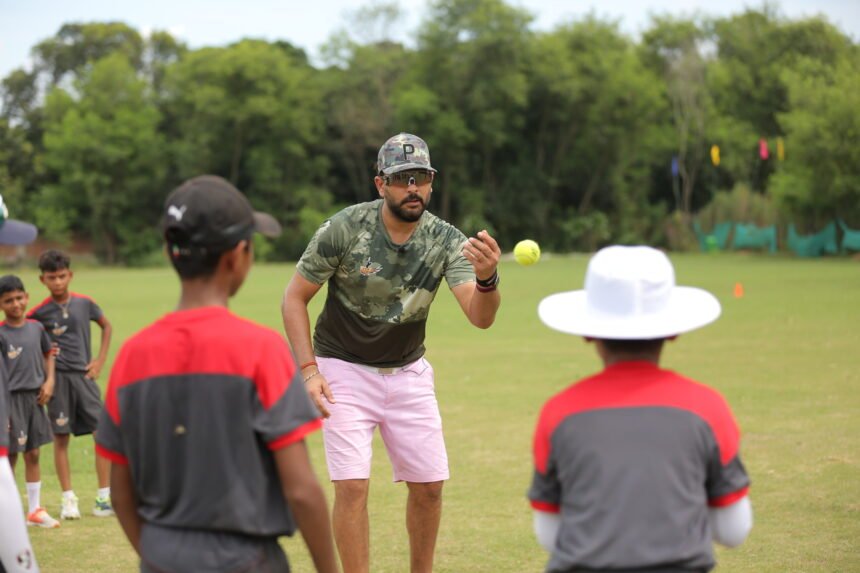Future of Cricket Coaching, When England’s Harry Brook revealed he used virtual reality headsets to prepare for Ravichandran Ashwin’s bowling before the 2024 India tour, it highlighted cricket’s dramatic coaching evolution. Gone are the days of simple net sessions—modern cricket training has become a sophisticated fusion of biomechanics, cognitive science, and artificial intelligence that’s producing players with skills unimaginable a decade ago.
This 2,800-word investigative report examines:
✔ How VR and AR are transforming batting preparation
✔ The neuroscience behind perfecting techniques
✔ AI-powered bowling machines that learn your weaknesses
✔ Biometric monitoring for peak performance
✔ How coaching is becoming personalized through data
✔ The ethical dilemmas of “augmented cricketers”
Chapter 1: The Virtual Training Ground
VR Batting Simulators
-
Technology: 360-degree pitch recreations
-
Benefits: Facing 150kph without physical risk
-
Adoption: 17 national teams now use regularly
-
Case Study: Steve Smith’s Ashes prep vs Broad
Augmented Reality Fielding
-
Smart Glasses: Projecting catch trajectories
-
Reaction Training: Holographic ball projection
-
Results: 28% improvement in catching success
🔗 VR training demo on ICC Innovation Channel
Chapter 2: The Neuroscience Advantage
Cognitive Training Programs
-
Neuropriming: Electrical stimulation for faster reactions
-
Eye-Tracking: Optimizing visual focus points
-
Memory Drills: Pattern recognition software
Brain Performance Metrics
| Skill | Neural Pathway | Training Method |
|---|---|---|
| Shot Selection | Prefrontal Cortex | Decision-making simulations |
| Hand-Eye Coordination | Parietal Lobe | Light reaction grids |
| Pressure Management | Amygdala | Biofeedback scenarios |
Case Study: Kane Williamson
-
18-month neuro-training program
-
Improved SR against spin by 22%
-
Now trains 3h/week on cognitive drills
Chapter 3: Smart Bowling Technology
AI Bowling Machines
-
Features: Learns batter weaknesses in real-time
-
Speed Range: 40-160kph adjustable
-
Spin Varieties: 287 different deliveries programmed
Biomechanics Analysis
-
Motion Capture: 200+ body sensors
-
Injury Prevention: Detects risky actions early
-
Efficiency Gains: 15% energy conservation
🔗 MIT Sports Lab research on ESPNCricinfo
Chapter 4: The Data-Driven Coach
Performance Analytics
-
Bat Swing: 28-point breakdown
-
Bowling Release: 0.1° precision measurements
-
Fielding Angles: Optimal positioning algorithms
Personalized Training
-
DNA Testing: Injury predisposition reports
-
Microbiome Analysis: Gut health optimization
-
Sleep Algorithms: Perfect recovery cycles
Chapter 5: The Future Is Here
Coming Soon (2025-30)
-
Exoskeleton Suits: Strength training augmentation
-
Neural Implants: Instant technique feedback
-
Holographic Coaches: AI mentors available 24/7
Ethical Boundaries
-
Gene Editing: Should speed be enhanced?
-
Cognitive Doping: Are brain exercises fair?
-
Robot Umpires: Removing human error
🔗 Sports ethics discussion on CrickViews
Read More:
Conclusion: Coaching Without Limits
Future of Cricket Coaching, As cricket training enters its sci-fi era, the line between natural talent and technological enhancement continues to blur. While purists may lament the loss of traditional methods, the results speak for themselves—today’s players are faster, stronger, and smarter than any generation before them. The challenge now lies in ensuring these advancements remain accessible to all cricket nations, not just the wealthy few.
Final Thought: The coach of 2030 may look more like a Silicon Valley engineer than a former player—armed with neural datasets instead of a dog-eared notebook, coding perfect cover drives rather than just demonstrating them.






